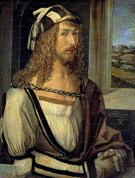Art, Art History and Design, School of
Date of this Version
2013
Citation
Published in A Companion to Renaissance and Baroque Art, First Edition, edited by Babette Bohn and James M. Saslow (Chichester: John Wiley & Sons, 2013), pp. 253–273.
Abstract
In the digital age, when images and films can be streamed with lightning speed onto computers at the press of a button, it is hard to fathom the society-altering impact the new printed image had when it first appeared in Europe around 1400. The introduction of printed images or repeatable pictorial statements irrevocably changed the practice of manually producing images one by one, by making them available in identical form, as multiple examples printed onto paper, a material that was newly available in Europe. Such multiples appeared first as independent images, then as book illustrations, but either way, this process of producing multiple originals and the ability to print as many examples as desired inexorably changed the art and culture of the time and the art and culture to come.
Early prints learned from and drew on a variety of past arts and crafts that were made exclusively by hand. Such earlier images, especially panel paintings and manuscript illuminations, were often stunningly beautiful, but they were labor-intensive and costly. The new printed image continued the two-dimensionality and other aspects of such medieval art including size (small to medium), subjects (mostly Christian), the importance of added color, and even typefaces, initials, and compositions for printed books. Yet the printed image, due to its ability to be multiplied and coupled with less expensive materials, namely paper—instead of wooden panels or the animal skin called vellum or parchment used for manuscripts—opened new possibilities by offering more affordable images and more of them. Such works included over the course of the early modern period new subjects, more sophisticated images, and works in new forms (for example, broadsheets and pamphlets), all of which reached a larger audience.
This essay considers the three major print techniques of the early modern period and discusses representative examples, showing how prints both continued and broke with past traditions, and exploring print practices and paper, prints’ subjects, numbers, and early collections. It hopes to show how prints changed two-dimensional art in early modern culture by expanding the possibilities of what it meant to be a visual image, at a time that saw the transition from hand to machine during the early modern print revolution.
[Includes supplemental artwork.]


Comments
Copyright © 2013 John Wiley & Sons, Inc. Used by permission.